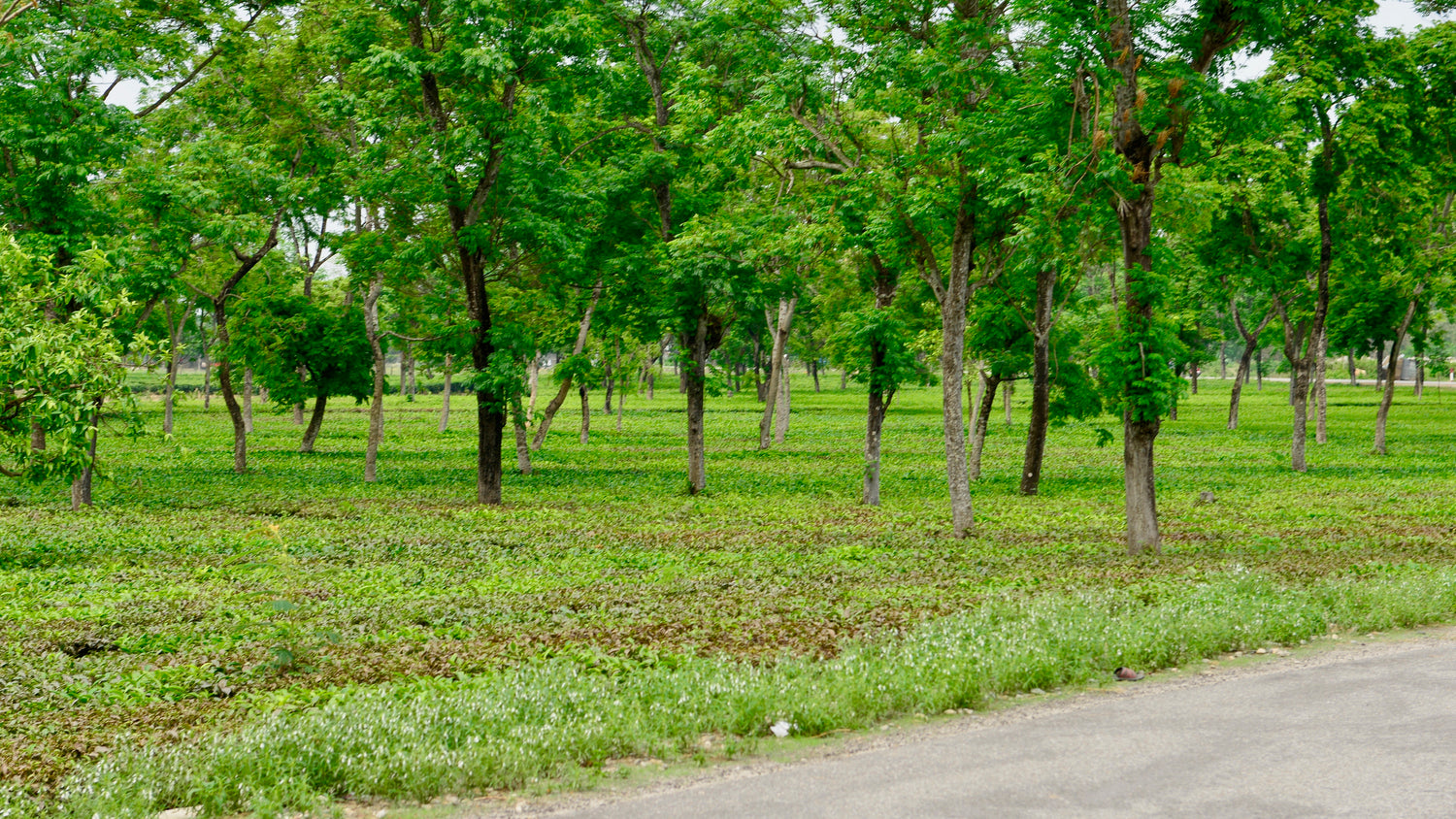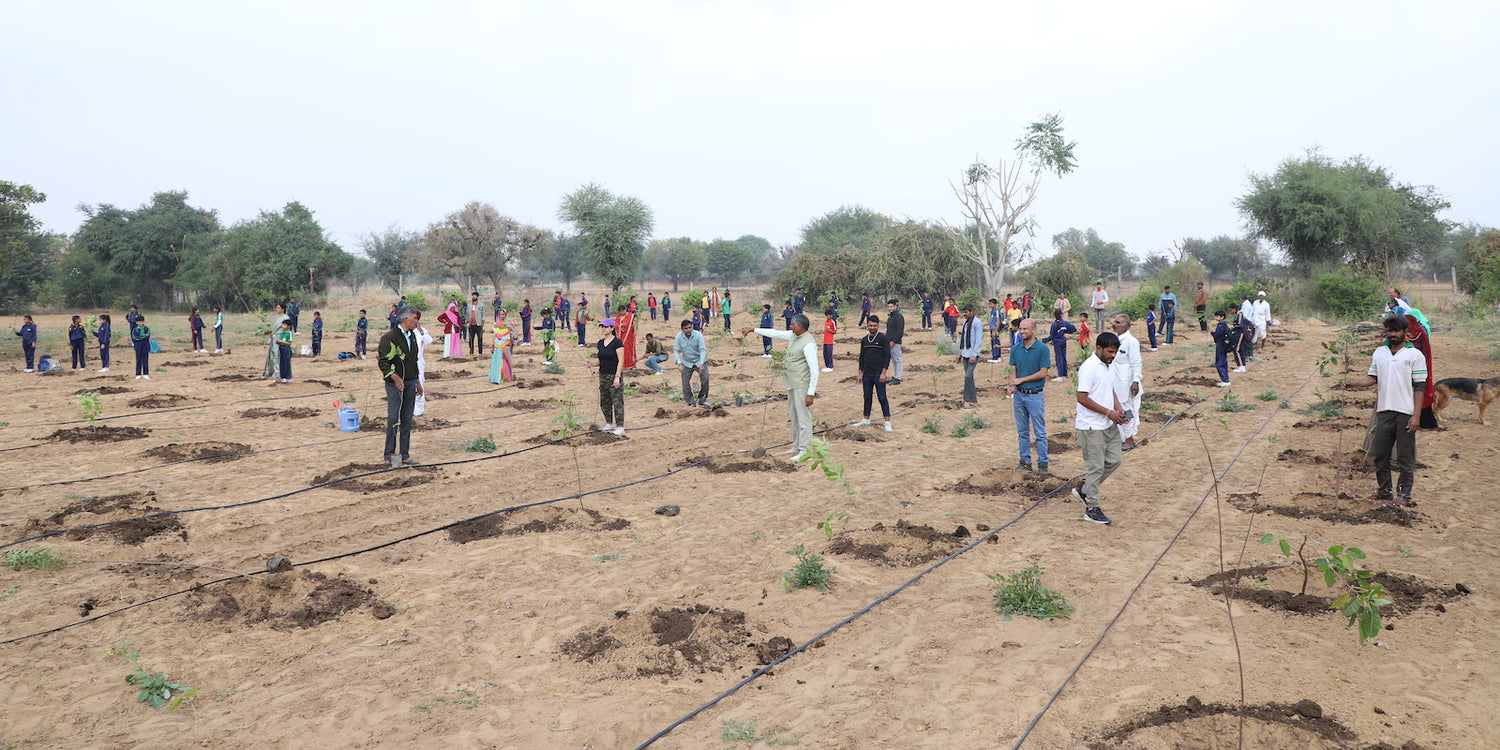Agroforestry in Rajasthan: Combating Desertification with Sustainable
Agroforestry in Rajasthan: Combating Desertification with Sustainable Practices Rajasthan, India’s largest state by area, is synonymous with vast dese Read more
Connect with us
-
👥 Corporates
If you are looking for:
- 🌲 Tree Plantation Events
- 📊 CSR Projects
📧 corporate@growbilliontrees.com
📞 +91 9699723523
💬 +91 9325931304 WhatsApp (Only)
🕒 Mon - Sat | 10am - 7pm IST
-
🧩 Tree Plantation NGOs
If you are looking for:
- 💰 Financial Assistance
- 🤝 Operational Support
📧 support@growbilliontrees.com
📞 +91 9699723523
💬 +91 9325931304 WhatsApp (Only)
🕒 Mon - Sat | 10am - 7pm IST
-
🌼 Individuals
If you are looking for:
- 👥 Group Tree Plantation Drive
- 🌳 Bulk Tree Plantation
📞 +91 9699723523
💬 +91 9325931304 WhatsApp (Only)
🕒 Mon - Sat | 10am - 7pm IST
Trending
Trees for Corporates
Agroforestry in Rajasthan: Combating Desertification with Sustainable Practices
Agroforestry in Rajasthan: Combating Desertification with Sustainable Practices
Rajasthan, India’s largest state by area, is synonymous with vast deserts, sparse rainfall, and extreme temperatures.
However, it’s also a land of resilience and innovation, where sustainable agroforestry practices are emerging as a powerful solution to combat desertification.
Agroforestry—the integration of trees with crops and livestock—offers a transformative approach to restore degraded lands, improve rural livelihoods, and enhance environmental sustainability in this arid region.
Historical Context of Agroforestry in Rajasthan
Rajasthan’s tryst with agroforestry isn’t new. Historically, farmers in the region planted trees like Khejri (Prosopis cineraria) and Babool (Acacia nilotica) alongside crops to provide shade, fodder, and fuel.
The Khejri tree, often called the “lifeline of the desert,” has been a staple of traditional agroforestry systems, enriching the soil and sustaining life even in drought conditions.
Ancient texts and local folklore highlight how trees were revered for their ecological and cultural significance.
The Need for Agroforestry in Rajasthan
1. Combating Desertification
Rajasthan is heavily affected by desertification, with over 60% of its area classified as arid or semi-arid. Agroforestry systems help stabilize the soil, reduce wind erosion, and prevent land degradation.
2. Improving Water Conservation
Trees in agroforestry systems enhance water retention in the soil and reduce evaporation rates, making them indispensable in a state where annual rainfall averages just 100–400 mm.
3. Enhancing Livelihoods
Agroforestry provides multiple income streams for farmers through the sale of timber, fodder, and non-timber products like gum and resin. In regions like Jodhpur and Barmer, agroforestry systems have increased farmer incomes by up to 40%.
4. Increasing Green Cover
Agroforestry contributes significantly to India’s National Afforestation Program and efforts to achieve 33% forest and tree cover.
5. Climate Change Mitigation
Agroforestry systems in Rajasthan sequester carbon and reduce greenhouse gas emissions. Studies suggest that integrating trees into farming systems can store up to 25 tons of carbon dioxide per hectare annually.
Scientific Benefits of Agroforestry
- Soil Health Improvement: Trees like Acacia and Khejri fix nitrogen in the soil, enhancing fertility and increasing crop yields by 20–30%.
- Biodiversity Boost: Agroforestry systems in Rajasthan support birds, insects, and small mammals, creating a thriving ecosystem in otherwise barren lands.
- Microclimate Regulation: The presence of trees reduces temperature fluctuations and provides shade for crops and livestock, ensuring better survival rates.
Common Agroforestry Systems in Rajasthan
1. Silvo-Pastoral Systems
This combines trees and grasses to provide fodder for livestock. Trees like Khejri and Babool dominate, offering shade and nutrients to grazing animals.
2. Agri-Silviculture
Crops like millets and mustard are grown alongside trees like Teak and Neem. This system maximizes land use and offers dual income streams.
3. Boundary Plantations
Farmers plant trees like Sheesham and Arjun along field edges to act as windbreaks, reduce soil erosion, and provide timber and fodder.
4. Horti-Silviculture
Fruit trees like Ber (Ziziphus mauritiana) are integrated with timber species, creating a system that supports both nutrition and income.
Fun Facts About Agroforestry in Rajasthan
- The Khejri Tree Connection: The iconic Khejri is mentioned in the Rigveda and is the state tree of Rajasthan, symbolizing life in the desert.
- Bishnoi’s Legacy: The Bishnoi community in Rajasthan has long practiced agroforestry, protecting trees and wildlife as part of their cultural ethos.
- Desert to Green: Agroforestry projects in districts like Jaisalmer and Barmer have transformed barren lands into green oases.
Environmental Impact of Agroforestry in Rajasthan
1. Reversing Land Degradation
Rajasthan loses approximately 5,000 hectares of land to desertification annually. Agroforestry systems stabilize the soil and reduce this alarming rate of degradation.
2. Reducing Wind Erosion
Trees act as natural windbreaks, reducing wind speeds by up to 80% and preventing the spread of sand dunes.
3. Supporting Wildlife
Agroforestry systems create habitats for desert wildlife like blackbuck and peacocks, aiding in biodiversity conservation.
4. Combating Air Pollution
With its ability to trap dust and pollutants, agroforestry also addresses air quality issues in regions like Jaipur and Alwar.
Challenges in Agroforestry Adoption
-
Lack of Awareness Many farmers are unaware of the long-term benefits of agroforestry, limiting its adoption.
-
Water Scarcity Despite its water-conserving potential, agroforestry requires initial irrigation support, which can be challenging in arid regions.
-
Policy Hurdles Complex timber regulations often discourage farmers from planting high-value tree species.
-
Market Access Farmers face difficulties in selling timber and agroforestry products due to limited market linkages.
Grow Billion Trees: Promoting Agroforestry in Rajasthan
Grow Billion Trees is at the forefront of agroforestry promotion in Rajasthan, aiming to transform degraded lands into thriving ecosystems while improving rural livelihoods.
Collaborations
- Partnering with the Rajasthan Forest Department and local NGOs to promote sustainable agroforestry practices.
- Working with academic institutions to develop drought-resistant tree species suitable for the region.
Execution Strategies
- Tree Nurseries: Establishing nurseries to provide saplings of native species like Khejri, Neem, and Babool at subsidized rates.
- Farmer Training: Conducting workshops and on-field demonstrations to educate farmers on agroforestry techniques.
- Market Linkages: Facilitating connections between farmers and industries to ensure fair prices for agroforestry products.
Awareness and Advocacy
- Running community outreach programs in villages to highlight agroforestry’s role in combating desertification.
- Promoting success stories of farmers who have transformed their lands through agroforestry.
Key Achievements by Grow Billion Trees
- Tree Plantation Drives: Over 5 million trees planted across Rajasthan as part of agroforestry initiatives, significantly increasing green cover.
- Economic Empowerment: Enabled 20,000+ farmers to adopt agroforestry, increasing their annual incomes by up to 40%.
- Climate Resilience: Agroforestry projects under Grow Billion Trees have helped sequester over 500,000 tons of carbon dioxide in Rajasthan.
Future Prospects
By 2030, agroforestry in Rajasthan has the potential to:
- Increase the state’s tree cover by 15%, contributing to India’s green targets.
- Reduce the rate of desertification by 50%, transforming barren lands into productive ecosystems.
- Provide sustainable livelihoods to 100,000 farmers, ensuring economic resilience in rural communities.
Conclusion
Agroforestry in Rajasthan represents a harmonious blend of tradition and innovation, offering solutions to some of the state’s most pressing challenges.
By combating desertification, improving livelihoods, and enhancing green cover, agroforestry is paving the way for a sustainable future in this arid land.
Grow Billion Trees is leading the charge, empowering farmers, restoring ecosystems, and ensuring that Rajasthan’s deserts are transformed into thriving landscapes.
Through collective efforts, agroforestry will continue to be a cornerstone of Rajasthan’s ecological and economic resilience.
Khejri Agroforestry in Rajasthan
Known as the “lifeline of the desert,” Khejri trees enrich soil, provide fodder, and stand as guardians against desertification in Rajasthan’s agroforestry systems.
Silvo-Pastoral Systems in Rajasthan
Combining trees and grasses, these systems provide shade for livestock and ensure a steady supply of fodder, making them a win-win for farmers and their animals.
Agroforestry and Desertification Control
With deep roots and green canopies, trees in agroforestry systems combat soil erosion and halt the spread of sand dunes in Rajasthan’s arid lands.
Horti-Silviculture in Rajasthan
Mixing fruit trees like Ber with timber species, this system satisfies the dual cravings of nourishment and income for farmers in the desert state.
Neem in Rajasthan Agroforestry
The ultimate multitasker, neem offers shade, pest control, and medicinal value, proving why it’s a farmer’s best friend in Rajasthan.
Windbreaks in Agroforestry
Rows of trees like Sheesham act as natural wind barriers, reducing erosion and protecting crops from Rajasthan’s relentless desert winds.
Agroforestry and Biodiversity in Rajasthan
These systems create oases for birds, bees, and even peacocks, turning dry lands into buzzing biodiversity hotspots.
Agroforestry for Livelihoods in Rajasthan
Farmers earn double benefits from crops and trees, with income from timber, fodder, and gum making agroforestry a financial boon.
Agri-Silviculture in Rajasthan
With crops growing under tree canopies, this system balances productivity and sustainability, making it a desert miracle for Rajasthan farmers.
Grow Billion Trees in Rajasthan Agroforestry
Transforming barren lands into green havens, Grow Billion Trees empowers farmers with training, saplings, and support for agroforestry success.
Desert-Resilient Species in Agroforestry
Trees like Babool and Acacia thrive in Rajasthan’s tough conditions, proving that nature always finds a way to fight back.
Carbon Sequestration in Rajasthan Agroforestry
These systems lock away carbon dioxide, turning Rajasthan’s arid lands into unexpected heroes in the fight against climate change.
You may like
Corporate Plantations
FAQ
What is agroforestry in Rajasthan?
Agroforestry blends trees with crops and livestock to combat desertification, enhance livelihoods, and boost green cover. Grow Billion Trees promotes this sustainable practice to transform Rajasthan’s arid lands.
Why is agroforestry important in Rajasthan?
It reduces desertification, stabilizes soil, and provides farmers with extra income from timber and non-timber products. Grow Billion Trees ensures these benefits reach rural communities.
How does agroforestry help combat desertification?
Trees prevent soil erosion, act as windbreaks, and improve water retention. Grow Billion Trees supports farmers in adopting agroforestry systems that turn barren lands green.
What is the role of the Khejri tree in agroforestry?
The Khejri tree enriches soil, provides shade, and thrives in arid conditions, making it the backbone of Rajasthan’s agroforestry systems. Grow Billion Trees promotes its plantation across the state.
Which agroforestry systems work best in Rajasthan?
Silvo-pastoral and agri-silviculture systems dominate, blending trees, crops, and livestock. Grow Billion Trees helps farmers implement these systems for sustainable farming.
How does agroforestry support livelihoods in Rajasthan?
Farmers earn dual incomes from crops and timber, along with additional benefits like fodder and gum. Grow Billion Trees facilitates market access and training to maximize these gains.
What challenges do farmers face in adopting agroforestry?
Lack of awareness, water scarcity, and policy hurdles hinder adoption. Grow Billion Trees bridges these gaps with education, resources, and advocacy.
How does agroforestry improve biodiversity in Rajasthan?
Agroforestry systems create habitats for birds, insects, and mammals, turning drylands into thriving ecosystems. Grow Billion Trees designs systems that balance farming with wildlife conservation.
Can agroforestry help mitigate climate change in Rajasthan?
Yes! Agroforestry sequesters carbon and reduces greenhouse gases, making it a key climate action tool. Grow Billion Trees scales up these systems to amplify their impact.
Why is neem popular in Rajasthan’s agroforestry?
Neem provides pest control, medicinal value, and timber, thriving in Rajasthan’s tough conditions. Grow Billion Trees ensures its widespread availability for farmers.
How does Grow Billion Trees promote agroforestry in Rajasthan?
We plant trees, train farmers, and connect them to markets, ensuring agroforestry systems flourish and benefit both people and the environment.
Can small farmers adopt agroforestry in Rajasthan?
Absolutely! Small farmers benefit from added income and sustainable land use. Grow Billion Trees provides training, saplings, and support to help them succeed.























